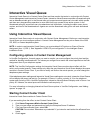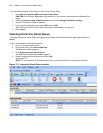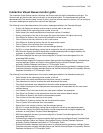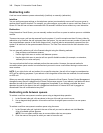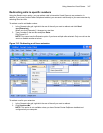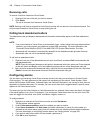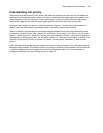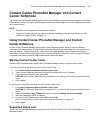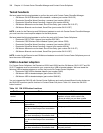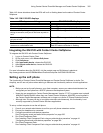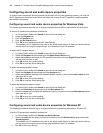Using Interactive Visual Queue 349
Understanding call priority
Each queue has a default priority level. When a call enters the system for the first time, the call adopts the
default priority of whichever queue it enters. If all calls in a queue have the same priority, the position of the
calls are based on each call’s total time in the current queue. If a queue contains calls that have multiple
priority levels, higher priority calls will have a higher position in the queue than lower priority calls.
As long as a call remains in a queue, it maintains its priority. However, if a call moves from one queue to
another queue, the call’s priority may change, based on the method used to move the call.
When you redirect a call manually, the call always adopts the default priority level of the destination queue.
For example, suppose Queue 1 has a priority of 1 and Queue 2 has a priority of 15. When a call first enters
Queue 1, it has a priority of 1. However, if you manually move that call to Queue 2, using either a drag-and-
drop operation or the right-click menu, the call priority lowers to 15. The rules work the same in reverse. If you
manually move a priority 15 call from Queue 2 to Queue 1, the call priority increases to 1 when it enters
Queue 1.
Calls interflowed automatically retain the original call priority, or adopt the priority of the new queue based on
telephone system settings. The interflow options you specify for a queue on the Interactive Visual Queue tab
in YourSite Configuration must be identical to those of the telephone system. For more information on
configuring interflowed calls, see “Adding queues” on page 141.





